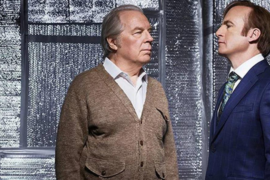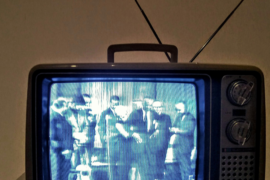“When I stepped out into the bright sunlight from the dark movie house, I had only two things on my mind: Paul Newman and a ride home.”
S.E. Hinton, The Outsiders
The words of S.E. Hinton have become etched inside the hearts and often inked on the bodies of her many fans. Other than the Bible, you don’t find many books quoted as their tattoos, except for S.E. Hinton’s The Outsiders. Regardless of whether there’s that cultural catchphrase telling us to ‘Stay Gold’ inked on a reader’s body, there is in fact a permanence to the impact of Hinton’s writing. Fans of her books tend to become so connected, perhaps even possessive, that they begin to believe that the East Side, across the tracks from the Socs, is their own turf. Readers become visibly protective of these characters whose names are unforgettable– Ponyboy, Sodapop, Cherry, Dallas—and whose lives become earnestly entwined with their own.
In all the best of ways, young adult books shape our identity by providing a sense of connection, understanding and belonging. Be it political or social or fiscal, each generation has its own challenges, advances and advantages and for over 55 years Hinton’s books have helped readers along this journey. Her novels remain a timeless guide in defining adolescence by helping millions of young readers make sense of the world and their space in it.
THE INSIDER:
S.E. Hinton was raised during the 1960s in Tulsa, Oklahoma where she rode horses, went to the local moviehouse and, as a teenager, wrote the types of stories that she wanted to read. In 1967 her first novel, The Outsiders, was published. It laid the groundwork for what is now a literary genre, making Hinton the architect and one of the most popular and best-known writers of young adult fiction. Six decades later with over 16 million copies sold, The Outsiders has been translated into 30 languages and still remains on middle and high school reading lists.
Hinton saw a gap between who kids were and how they were represented in media. She set out to change that and did so by accessing emotions and a language of feelings that spoke to and about teens in the most respectful and authentic ways. It took an insider to write The Outsiders as Hinton avoided the warm and fuzzy and infused an often-harsh realism with an ever-present hopefulness, thus earning credibility in the space and geography of young adults’ minds and lives.
The year 1967 gave birth to the novel and it was also the year that Hinton’s first generation of ‘territorial’ fans were born. In 1980, when The Outsiders turned 13, a bold group of 13-year-old students from the Lone Star School in Fresno, California wrote a letter to Francis Ford Coppola. The students were led by school librarian Jo Ellen Misakian who noticed that reluctant 7th and 8th grade readers were responding to the book and felt that a movie version would encourage more kids to read. Misakian had seen a magazine advertisement for the Coppola-produced Black Stallion film and felt that he would be the ideal person to bring the adored S.E. Hinton characters to cinematic life. The letter included a petition requesting and perhaps politely demanding that he turn the book into a film. It was indeed an offer Coppola couldn’t refuse.
Francis Ford Coppola’s 1983 film version of The Outsiders was more than just a movie. It became, for many, a moment, introducing audiences to names and faces who would become generational icons including C. Thomas Howell, Ralph Macchio, Patrick Swayze, Rob Lowe, Diane Lane, Emilio Estevez, Matt Dillon and Tom Cruise. Many would appear in other S.E. Hinton film adaptations. Similar to Jo Ellen Misakian and her students, Coppola was so taken while immersing himself in the world of S.E. Hinton that he didn’t want to leave her universe. Immediately upon completion of The Outsiders, Coppola promptly began filming Hinton’s 3rd novel, Rumble Fish. In fact, he stayed in Tulsa to use most of the cast and crew from the production. Coppola’s contributions elevated the ‘Hintonverse’ to another stratosphere. In Rumble Fish, The Motorcycle Boy reigned, and in the early 1980’s, cinematic adaptations of the beloved S.E. Hinton YA stories ruled. Bookending Coppola’s films, in a three-year timespan between 1982 with Tex (directed by Tim Hunter) and 1985’s That Was Then This Is Now (directed by Christopher Cain) all of her books at the time were adapted into movies.
SUNSETS:
In my own experience as a NYC public high school English teacher for over 25 years, it is rare that a story stays fresh and resonates throughout the decades. I have used several books in my class curriculums, some numerous times, but nothing has had the longevity and staying power of The Outsiders. I have witnessed the book’s impact on my students and this impact, in turn, has greatly impacted me. Even when we are not reading it in class, many of the themes and lessons remain with me as a daily reminder of who and why I teach. The Outsiders goes deep into emotional/psychological issues of often misunderstood teens, and what it means to be them. “Can you see the sunset real good from the West Side? You can see it good from the East Side, too.” (pp. 129-130). Hinton’s writing creates a space for self-protecting adolescence to share vulnerable thoughts, where they can be less guarded to show affection, look at sunsets and recite poetry. Her point of view is not judgmental of the young adults in the story, but rather values the authenticity of their many challenges.
Hinton’s direct writing style ignites those who haven’t much interest in reading and excites students who love to read. In her books, thoughts slow down and the story moves quickly, giving the reader time to pause, think and feel. The language is raw but elegant and although the writing may be simple, the issues that the book addresses are not; case in point, this conversation between Daryl and Ponyboy talking about their brother Sodapop’s recent heartbreak: “When Sandy went to Florida…it wasn’t Soda, Ponyboy. He told me he loved her, but I guess she didn’t love him like he thought she did, because it wasn’t him.” “You don’t have to draw me a picture,” I said. “He wanted to marry her anyway, but she just left” (p. 174). In exploring the book’s themes of inclusion, marginalization and acceptance, my students have fostered a deeper relationship with writing by journaling, where they have the freedom to express and improve their critical thinking abilities through uninterrupted self-reflection.
The Outsiders gives further license for kids to lean on literature as a means of self-expression. The boys in the book rely on Margaret Mitchell’s Gone with the Wind and Roberts Frost’s poem Nothing Gold Can Stay to help them put into words what they were feeling. In reading The Outsiders, my students similarly have gained the tools and confidence to articulate their wide range of emotions. This engagement is often a catalyst for action.
HOUSE OF HEALING:
Danny Boy O’Connor has the Outsider’s logo tattooed on his lower left abdomen. He so identified with The Outsiders that it led him to a life-changing moment of self-discovery and, years later, a home. Danny was only two months old when his father went to prison, and only met him twice in his life. When he was in his early teens his father was murdered, leaving Danny to be raised by his single mother who moved him and his siblings from Brooklyn to the Los Angeles Valley. O’Connor was at the age when class differences started to become apparent. “In southern California in the 80’s there were the haves and the have nots.” Danny stole, got into fights and began to add several gang-related infractions to his growing juvenile legal record.
Standing at 6’6” with a penchant for fisticuffs and a pull towards mischief, after seeing the movie, O’Connor found an acceptable way to channel his imploding teenage emotions. O’Connor was 15 when the movie was released in March of ‘83. He saw it with his friend Steve Sokolsky who was equally blown away and told O’Connor to read the book, which he said was even better. O’Connor agreed. “I was Dally Winston, I too never let my guard down, I saw him as a big brother surrogate, but feelings-wise, I was Johnny Cade, I wanted the fighting to end and for everybody to simply get along.”
The life lessons from The Outsiders encouraged O’Connor to look at the real-world consequences of gang affiliations, of what he was doing to himself and those around him. Turning his combustible feelings into art, in 1992 O’Connor helped form the legendary hip hop group House of Pain whose anthem, Jump Around, is still played during timeouts in football stadiums and basketball arenas across the globe. When he passed through Tulsa as a successful touring musician, O’Connor felt an itch in his gut, a nagging feeling, a la Richard Dreyfuss in Close Encounters of the Third Kind that something was pulling him to find it. The unidentified fictional object that ultimately came to him was a 4 bedroom, 1 bath, 1,395 sq. ft. single family home located at 731 E. St. Louis Street in the Sperry section of Tulsa: the home of Ponyboy, Sodapop and Daryl – the Curtis brothers – in The Outsiders movie. In 2016, not only did O’Connor find it, he bought it for $15,000. “When I saw it, I felt like I was seeing my generation’s Graceland.” As such, O’Connor couldn’t help falling in love and turned the home into a museum that opened in August of 2019.
Half therapeutic indulgence, half public service, O’Connor formalized a fringe group of an Outsiders subculture into a community with a home. Seeing that there was a deep personal and cultural need to honor The Outsiders’ legacy, O’Connor took on the role of Museum Curator and Executive Director. With the blessing and generous fiscal support of Hinton and several others, he restored the rundown home, completely gutting the interior to bring it back to how it looked in the film. After three painstaking years of renovations, The Outsiders House Museum now allows for fans and visitors to go inside the story, experiencing artifacts, furniture, costumes, rare photographs, memorabilia and several hard to find copies of the book.
The Museum has also been a boon to civic pride, a tourist destination and to some, a ritualistic passage of sorts. It’s Tulsa’s version of running up the “Rocky” steps in Philadelphia or walking across the street at Abbey Road. To many the home presents itself as a pilgrimage, as if they are returning to a familiar place they once knew. “People often cry,” says O’Connor, commenting about the overflow of emotions. “It is powerful to witness.”
GIMME SHELTER:
O’Connor initially thought that The Outsiders House Museum would be of interest to 50-somethings like himself who wanted to look at Dally Winston’s leather jacket but he was surprised to find that the crowds were drawn mostly from the novel – 7th and 8th graders who bring the whole family. He compares the broad demographic of visitors to something that resembles the diverse appeal of a Rolling Stones’ concert: “It is such a gift to see parents and kids enjoy the museum together. Not too many places provide such a shared cultural connection. The ability to resonate with people of all ages speaks to the power of Susie’s writing.”
When I visited Tulsa in the summer of 2023, it was clear that the experience at The Outsiders House Museum holds deep personal and generational significance for visitors like Christina Pacheco and her third-grade daughter Ava. Christina drove three hours each way from Arkansas because she wanted her daughter to be with her during a truly important day in Christina’s life. Christina read the book when she was 12 in 7th grade and then watched the movie. It became and still remains her favorite movie of all time. Her siblings will not watch it with her because she quotes the entire thing. Obsessed all her life, what resonated most for her was the rebellion. On her leg is a tattooed portrait of C. Thomas Howell as Pony Boy from a scene where the characters are inside a church and quoting Robert Frost.
When Danny O’Connor speaks with the kids and students, he tells them what he wishes he learned long ago. “It’s OK to ask for help, there is great strength in vulnerability.” That is something he learned from reading The Outsiders and renovating The Outsider House. “I hadn’t the notion or the means to fix up a broken-down house. But I asked for guidance, and then came the support and the people volunteering their time and love for the project. Great things happen from speaking up.”
The Outsiders House involvement in educational programs throughout the Tulsa community and beyond is its biggest draw. As a non-profit organization, it is set up for schools to visit Monday-Thursday. The museum has a vibrant partnership with parochial schools, as well as a great relationship with the Tulsa School district. Averaging more than 10 school tours weekly, often accommodating groups of 200 people, over 10,000 students have been to the house just this year. The museum provides educational resources, school events, workshops, and initiatives aimed at promoting literacy and empathy. Their curriculum includes a digital component and virtual access to the museum, but O’Connor suggests that the transformative connection to the story is most brought to life as “students enjoy arriving in 60’s style costumes, dressing up in jeans, white tee-shirts and greasing up their hair like characters from the book.”
THE EDUCATIONAL CURRENCY OF GOLD:
Teachers continue to teach S.E. Hinton’s books because students continue to benefit from reading them. Gary Malone is an 8th grade teacher at IS 184 in Flushing, NY. Gary started the Stay Gold Project with a grant from Funds For Teachers in 2019 and was able to visit the House. When Gary, who has “Stay Gold” tattooed on his wrist, spoke with Ms. Hinton at the 2019 official opening of The Outsiders House museum, she told him that “she loves teachers.” The Stay Gold Project allows for his students to write a story stylistically similar to The Outsiders in that it is written with a first-person narrator. After that, the similarities end as Malone encourages them to find their own voice and not replicate Hintons. The assignment asks the students to create a background for the narrator and write from that character’s point of view, having them face both conflict and resolution. Hinton may have opened the door but Malone wants his students to make their own path.
Whether it’s Malone’s students today, Jo Ellen Misakian’s students in 1980, or my students tomorrow, the journey into adulthood often feels like an endurance test. All students want to grow up healthy and find safety and stability in life. Books help readers situate ourselves within our lives and times. The uncertainty of adolescence invites us to lean on books to protect and guide, offering a hopefulness for our present and future selves. The books we read, particularly when we are in our teens, come to be part of who we are. As Danny O’Connor sees, each time the door opens on 731 E. St. Louis Street, fiction can become as real to us as our own memories.
L. A. GABAY is a doctor of Urban Education whose research on Juvenile Detention Education is documented in his book, I Hope I Don’t See You Tomorrow (2016).
He is a New York City public school educator who teaches English at the Judith S. Kaye Transfer High School in Manhattan. Lee’s published works about education, incarceration, movies, basketball and sneaker culture can be found in Slam Magazine, Bleacher Report, Cineaste Magazine and many other publications In 2016 the New York Times named him “A New Yorker” of the year.
Like what you’re reading?
Get new stories, sports musings, or book reviews sent to your inbox. Drop your email below to start >>>
NEW book release
Direct Connection by Laura Farmer. Order the book of stories of which Mike Meginnis says there is “an admirable simplicity at their heart: an absolute, unwavering confidence in the necessity of loving other people.”
GET THE BOOK



